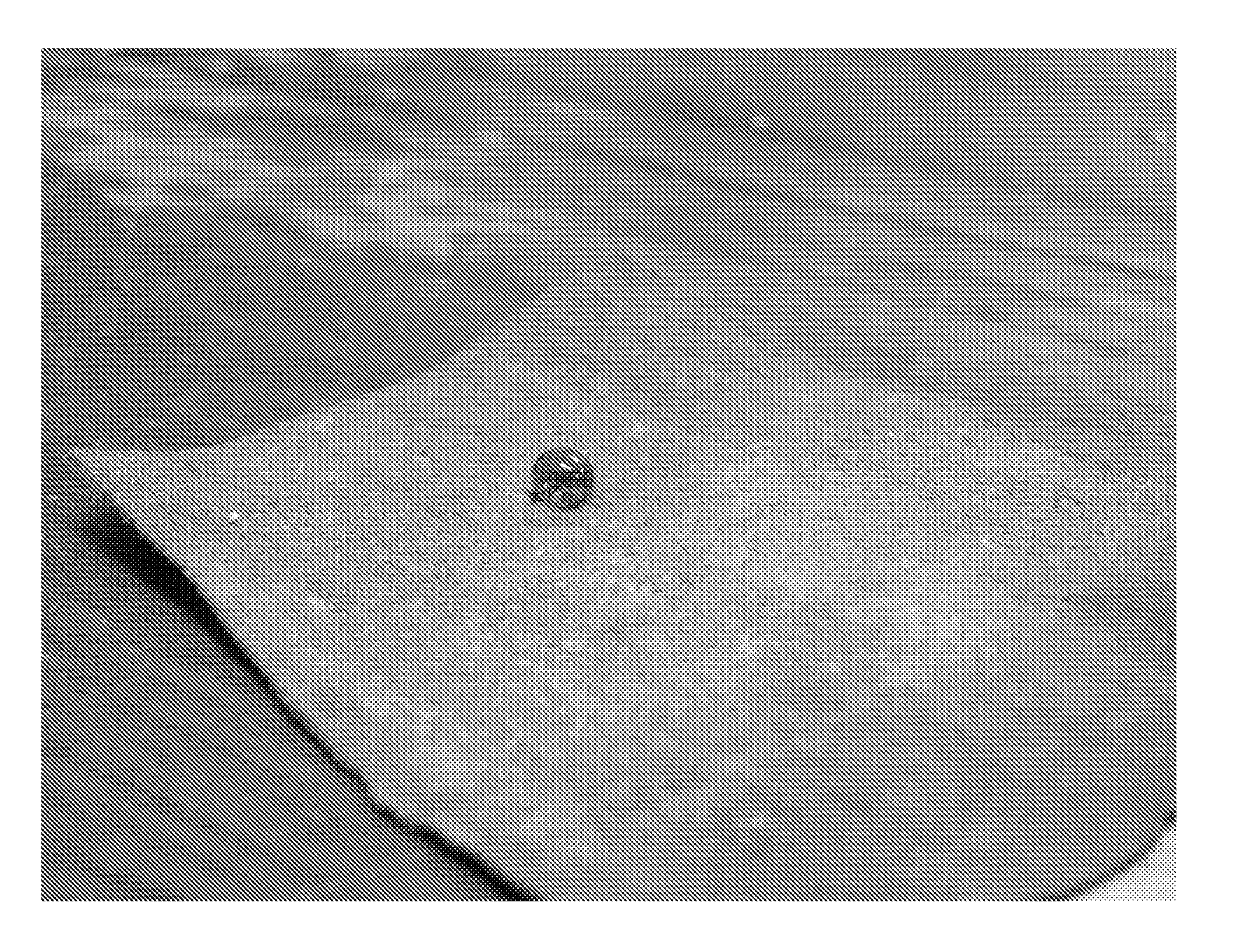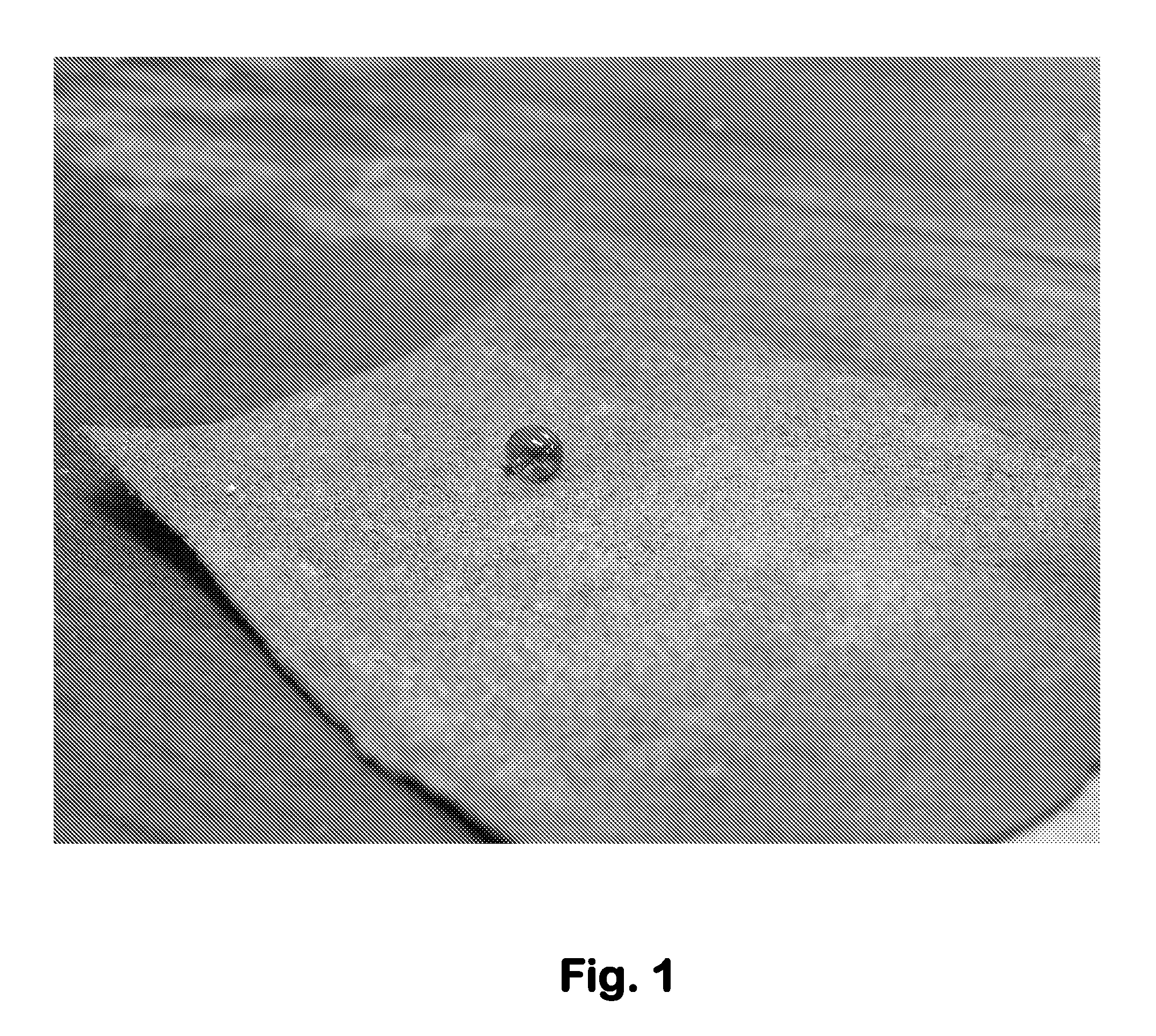Superhydrophilic and Superhydrophobic Powder Coated Fabric
a superhydrophobic and fabric technology, applied in the field of superhydrophilic and superhydrophobic powder coated fabric, can solve the problems of poor water repellent fabric quality, poor water repellent effect, and difficult to make these fabrics
- Summary
- Abstract
- Description
- Claims
- Application Information
AI Technical Summary
Problems solved by technology
Method used
Image
Examples
Embodiment Construction
[0018]Both superhydrophilic (SHL) and superhydrophobic (SHB) powders, including powder made from specially formulated sodium borosilicate glass and powder made from diatomaceous earth, are applied to fabric for attracting and repelling water. Examples and further explanation of these powders is found in co-pending U.S. patent application Ser. No. 11 / 749,852, filed May 17, 2007, and U.S. patent application Ser. No. 11 / 777,486, entitled “Superhydrophobic Diatomaceous Earth”, filed Jul. 13, 2007, both herein incorporated by reference. The superhydrophilic and superhydrophobic powders converted non-water-repellant fabrics to water repellant superhydrophobic fabrics, and vice-versa, by electrostatic spray coating and chemical bonding the SHL and SHB powders to the fabric. This was demonstrated on two types of non-woven fabrics and an all cotton fabric using both superhydrophilic and superhydrophobic powder. The non-woven fabrics were composed of synthetic polymers.
[0019]The superhydrophi...
PUM
| Property | Measurement | Unit |
|---|---|---|
| Length | aaaaa | aaaaa |
| Nanoscale particle size | aaaaa | aaaaa |
| Structure | aaaaa | aaaaa |
Abstract
Description
Claims
Application Information
 Login to View More
Login to View More - R&D
- Intellectual Property
- Life Sciences
- Materials
- Tech Scout
- Unparalleled Data Quality
- Higher Quality Content
- 60% Fewer Hallucinations
Browse by: Latest US Patents, China's latest patents, Technical Efficacy Thesaurus, Application Domain, Technology Topic, Popular Technical Reports.
© 2025 PatSnap. All rights reserved.Legal|Privacy policy|Modern Slavery Act Transparency Statement|Sitemap|About US| Contact US: help@patsnap.com


